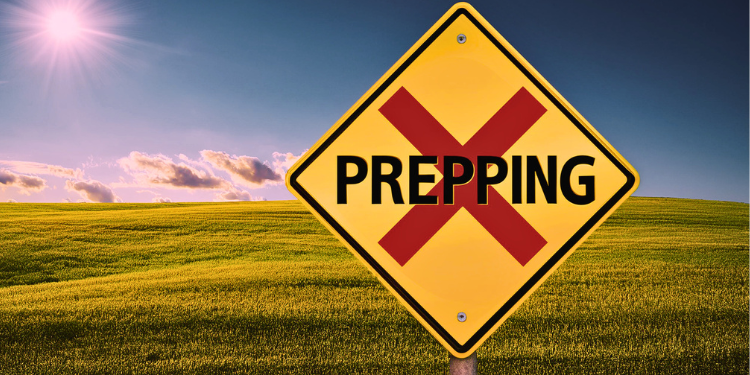It seems like everywhere you turn, fewer and fewer people are talking about prepping. What used to be a growing movement, driven by concerns over economic instability, natural disasters, or even just the common sense of being prepared, is now dismissed and scoffed at. The irony? Those who abandon prepping are walking away from something that wasn’t always called “prepping” at all. It used to just be how people lived.
Back in the day—think of your grandparents or great-grandparents during the Great Depression—being prepared was a natural part of life. Families grew their own food, stored it for the winter, and knew how to stretch what little they had to last through tough times. Everyone had a pantry full of canned goods, a wood stove to heat their home, and enough basic supplies to get through whatever life threw at them. They didn’t call it prepping; they called it living.
So why is prepping now seen as something only “doomsday” enthusiasts or conspiracy theorists do? The truth is modern society has become far too comfortable, relying on instant access to everything from groceries to electricity. We’ve been lulled into complacency by convenience, and that’s where the real danger lies.
Complacency in the Age of Convenience
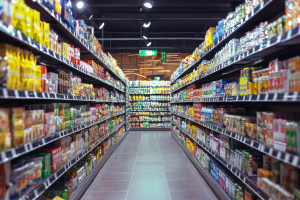 The conveniences of modern life are hard to argue against. Who doesn’t love the fact that we can order anything we want and have it delivered within days, or even hours? If you’re cold, just adjust your thermostat.
The conveniences of modern life are hard to argue against. Who doesn’t love the fact that we can order anything we want and have it delivered within days, or even hours? If you’re cold, just adjust your thermostat.
Need food? Drive down to the nearest grocery store and stock up. This ease of access has bred a reliance on things that can vanish the moment a crisis hits.
We’ve seen glimpses of how fragile our systems are. The pandemic of 2020 exposed weaknesses in supply chains that left store shelves empty, from toilet paper to meat. Natural disasters like hurricanes and wildfires regularly knock out power for days, sometimes weeks, leaving entire communities in the dark. And yet, as soon as things settle back into normalcy, people forget. They assume the system will always bounce back, that help will always come, and that someone else will take care of the problem.
This over-reliance on modern conveniences is why so many people today are vulnerable. We’ve lost the skills our ancestors considered basic knowledge. Most people don’t know how to grow their own food, build a fire, or purify water without fancy gadgets. When you think about it, what we call prepping today is really just adopting the mindset that people had naturally in the past: being self-sufficient and prepared for the unknown. Most people wouldn’t last even a few hours without all these modern conveniences, let alone survive for a few days in the wild, for instance. That’s why I tell all my friends about this guide that shows you step-by-step how to make it on your own and with just a few items, wherever you end up in the wild.
The Old Way of Life
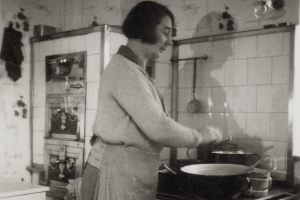 When you take a closer look, you realize that prepping isn’t something new. It’s just a return to the way things used to be. Our ancestors didn’t have the luxury of modern technology to fall back on.
When you take a closer look, you realize that prepping isn’t something new. It’s just a return to the way things used to be. Our ancestors didn’t have the luxury of modern technology to fall back on.
They couldn’t Google how to fix a broken fence or order seeds from an online store. They had to know how to do these things for themselves because their survival depended on it.
They saved and reused everything. Old clothing became rags. Broken tools were fixed, not replaced. Families grew their own food, preserved it through canning, and kept a deep pantry stocked with essentials. They had to be resourceful because there wasn’t any other option. Look at the Amish people for example, who still live like this. If there is a disaster tomorrow, they won’t even notice. Here is a good resource if you want to apply the Amish knowledge to your day-to-day life.
Prepping today follows the same principles. It’s about being resourceful, self-reliant, and ready for whatever comes your way. Whether it’s an economic downturn, a natural disaster, or even something as simple as a power outage, the goal is to take control of your own situation rather than relying on fragile systems that will fail as soon as SHTF.
Why People Are Abandoning Prepping
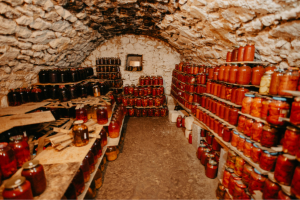 So why are so many people walking away from prepping now? It comes down to two things: comfort and complacency. The more we’ve become used to the conveniences of modern life, the less inclined people are to prepare for the hard times.
So why are so many people walking away from prepping now? It comes down to two things: comfort and complacency. The more we’ve become used to the conveniences of modern life, the less inclined people are to prepare for the hard times.
We’re surrounded by so much abundance that the idea of scarcity seems laughable to most.
It’s easy to believe that nothing bad will happen. After all, we’ve gone through decades of relative peace and prosperity, especially in developed countries. Why would you need a year’s worth of food stored when there’s a grocery store just down the street? Why learn how to fix things when you can call a handyman or buy a replacement?
This mindset is what’s causing so many people to abandon prepping. They assume that the systems in place will always be there, ready to catch them when they fall. Unfortunately, history has shown us time and again that this isn’t always the case. But for our ancestors this wasn´t a way of prepping, for them this was daily life. This is how they survived difficult times, like the Great Depression. You can find here some of the recipes that them through.
The Modern Prepping Mindset: Old-School Self-Sufficiency
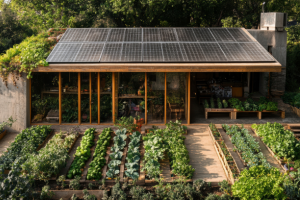 For those of us who continue to prep, it’s not about fear or paranoia. It’s about common sense and practicality.
For those of us who continue to prep, it’s not about fear or paranoia. It’s about common sense and practicality.
Prepping is simply about going back to a mindset of self-sufficiency. It’s about taking responsibility for your own well-being instead of relying on systems that might not always be there.
Related: Great Depression Foods We Will All Be Eating Again Soon
When you grow your own food, store what you need, and learn the skills to be self-sufficient, you’re not just preparing for some far-off disaster. You’re adopting a way of life that’s sustainable, practical, and resilient. You’re reclaiming the independence that our ancestors had and recognizing that, in the end, it’s always better to be prepared than to be caught off guard.
Why Prepping Is More Important Than Ever
While prepping may not be as trendy as it was a few years ago, the need for it has never been more important. We live in a world that’s more interconnected—and therefore more vulnerable—than ever before. Supply chains can be disrupted overnight. Natural disasters are becoming more frequent and severe. Economic instability looms, and the risk of grid failure, cyberattacks, or other crises is always present.
But by embracing a prepper’s mindset, you’re simply choosing to be self-reliant. You’re choosing to live like your grandparents did—prepared, resourceful, and ready for anything. Prepping isn’t about hoarding or living in fear. It’s about common sense, and it’s about returning to the principles that used to be a way of life.
So, while everyone else may be abandoning prepping, now is the perfect time to double down on it. The world may change, but the wisdom of being prepared never goes out of style.
If you’re looking to transform your home into a self-sufficient fortress, this guide offers comprehensive strategies for doing just that. Not only will it show you how to stockpile food and secure your home, but it will also guide you on what to do immediately once a crisis begins to drastically cut down the chances your house will ever become a target for looters, rioters, or unwelcome government officials.
This guide is designed to help you prepare effectively for long-term emergencies without ever having to leave your home. For more details and to see how this guide can enhance your preparedness, consider exploring what it has to offer.
You may also like:
 The Best States To Outfox FEMA
The Best States To Outfox FEMA
The SHTF Medicinal Garden You Should Have in Your Backyard (Video)
How to Live in Your Car if You Have To
Items You Need to EMP-Proof Before It’s Too Late
$10 Recipes That Will Keep Your Family Well Fed During Crisis
Read the full article here
